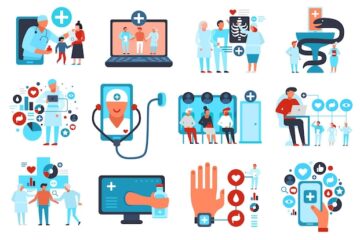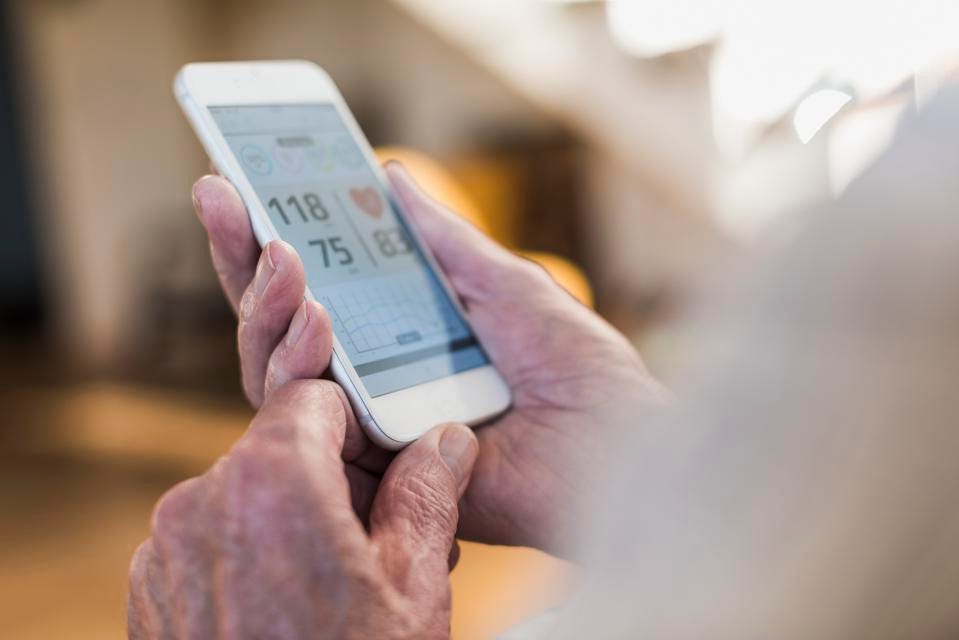 Patients undergoing ambulatory surgical procedures are routinely sent home the same day of their surgery. Effective systems for follow up to monitor for things like wound healing and pain management is therefore critical. Forcing patients to make the trek back to the clinic, especially when many went back to work in a day or two, can be tedious, especially if those visits rarely lead to management changes.
Patients undergoing ambulatory surgical procedures are routinely sent home the same day of their surgery. Effective systems for follow up to monitor for things like wound healing and pain management is therefore critical. Forcing patients to make the trek back to the clinic, especially when many went back to work in a day or two, can be tedious, especially if those visits rarely lead to management changes.
Health apps to monitor patients remotely have been tested, including surgery apps for post-operative patients. In addition to items like questionnaires for pain and images of surgical sites, we’ve also seen apps taking innovative approaches to improve recovery by getting patients more active.
In a recently published study in JAMA Surgery, Armstrong et al conducted a randomized controlled trial (RCT) to compare outcomes between remote follow-up using the QoC Health Inc health app and conventional in-person visits during the first 30 days after elective ambulatory breast reconstruction at the Women’s College Hospital in Toronto, Canada.
For this study, all included participants were nonsmokers with a BMI =30, as per requirements for ambulatory breast reconstruction. Patients were excluded if they experienced chronic pain, were taking narcotics for pain on a regular basis, or had an allergy to local anesthetics or morphine-like medications. Patients using the app were assessed via photographs of the surgical site, and the quality of recovery was measured on the pain visual analog scale and a 9-item questionnaire. When assessments were not completed, email reminders were sent to the patients accordingly. During the 30-day follow-up period, monitoring was conducted daily in the first two weeks and weekly in the remaining two weeks. Assessments with high pain scores were flagged for the offline surgeon’s attention and the patient was prompted for an in-person follow-up.
Results were adjusted with prior radiotherapy (potentially associated with delay in wound healing) and distance between the patient’s home and the hospital (distance barrier). There were fewer in-person visits in the remote follow-up group in the first 30 days after surgery (before adjustment: 0.4 visits vs 1.64 visits, 95% CI 0.24–0.66, P<0.001; adjustment for prior radiotherapy: IRR 0.42, 95% CI 0.25-0.70, P=0.001; adjustment for distance: IRR 0.38; 95% CI 0.23-0.64; P<0.001). The group using the mobile app sent more emails than the in-person group in the first 30 days after surgery (before adjustment: IRR, 4.13, 95% CI 1.55–10.99; P=0.005; adjustment for prior radiotherapy: IRR 4.38, 95% CI 1.62-11.84, P=0.004; adjustment for distance: IRR 4.84, 95% CI 1.69-13.84; P=0.003).
There was no difference in satisfaction scores between groups, but the mobile app group gave higher convenience scores (before adjustment: IRR 1.39, 95% CI 1.09–1.77, P=0.008; adjustment for prior radiotherapy: IRR 1.39, 95% CI 1.08-1.79, P=0.01; adjustment for distance: IRR 1.35, 95% CI 1.05-1.73, P=0.02).
Although the existing standard of follow-up care should be used for high risk patient groups, remote follow-up for patients who received ambulatory surgery is a good approach. Not only is it convenient for the patient, but it also offers a cost-effective solution for health systems. Using mobile apps for follow-up care of ambulatory surgery is quite a new idea, and is in a sense, an extension of Canada Health Infoway’s initiatives on promoting EMR use in ambulatory care, which have also been shown to improve patient safety and continuity of care.
[“Source-ndtv”]




